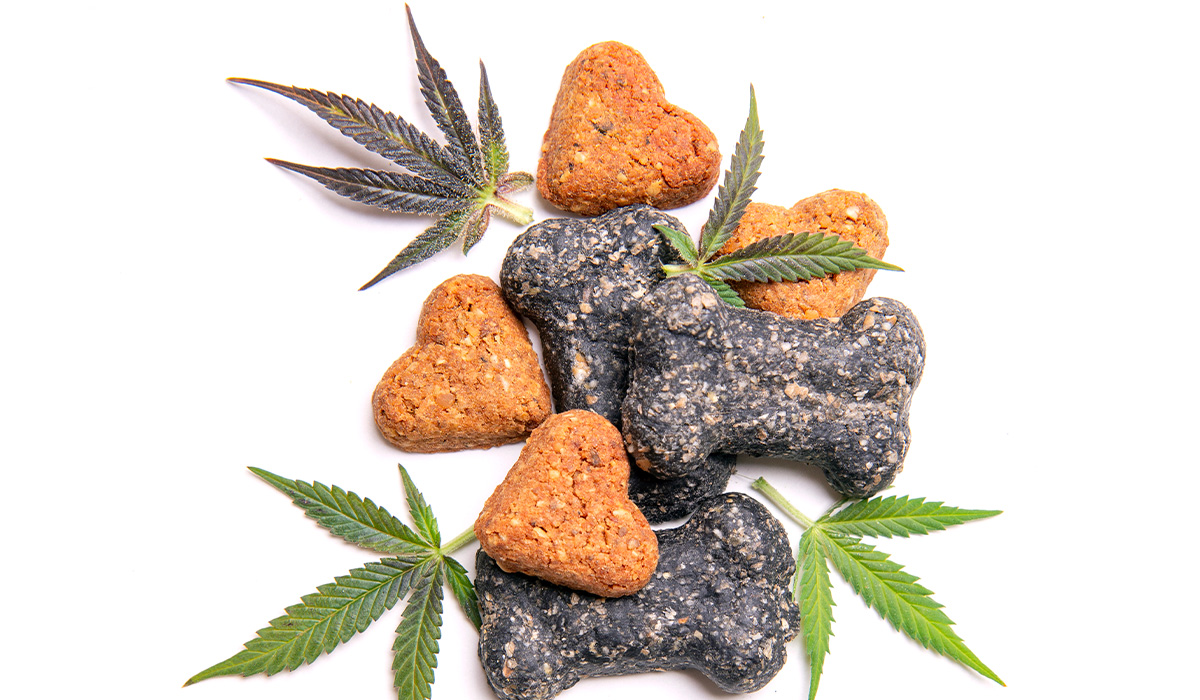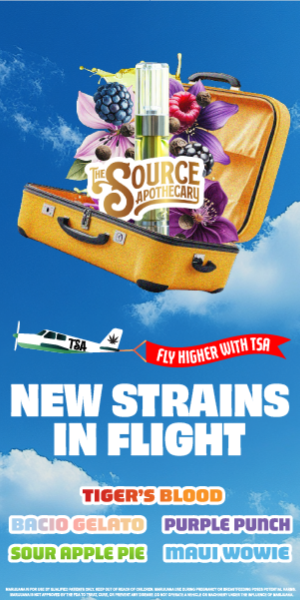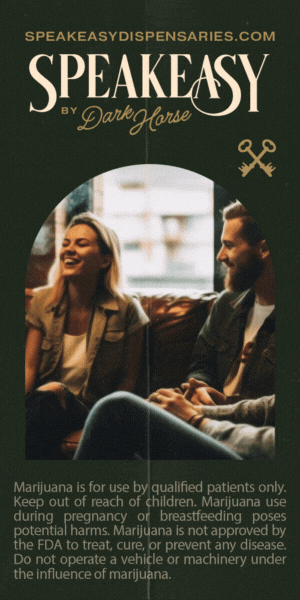BARKING UP THE RIGHT TREE
Exploring Cannabis for Canines
By Andrea Harris

The canine endocannabinoid system looks a lot like ours. Their receptors are more sensitive to the effects of phytocannabinoids (cannabinoids that occur naturally in the cannabis plant), especially to tetrahydrocannabinol, or THC. In fact, a THC-intoxicated canine is a common sight in a veterinary clinic. For pups, too much THC often results in wobbling back and forth, dribbling urine, dramatized responses to stimuli, difficulty controlling body temperature and difficulty with hydration.
These cases are all handed the same way (unless there’s chocolate involved). Dogs receive anti-nausea medication to help with dizziness, heat support, IV fluids to maintain hydration and a quiet place to rest. Once they have a bag of fluids, they perk up and can go home without medications.
During my time as an emergency veterinary technician, I witnessed many different things; however, THC was the only intoxication that didn’t require forced emesis, activated charcoal and prayer. That alone made me curious about what the plant could do for the dogs. My research helped me understand that THC has a strong affinity to the CB1 receptors. The highest concentration of CB1 receptors in the canine brain is located in the cerebellum. The cerebellum is responsible for balance, and that’s why we see dogs sway back and forth when they’re intoxicated.
While high doses of THC are overwhelming to the canine endocannabinoid system, THC does have proven therapeutic effects when used in conjunction with other phytocannabinoids. It all shakes down to how the cannabinoid binds to the receptor.
For instance, THC binds orthosterically to the receptor. Think of orthosteric as the traditional binding site, and imagine THC nestled snugly into the CB1 receptor like a glove. CBD, on the other hand, binds allosterically to the receptors. Allosteric binding is anywhere else on the receptor except the traditional binding site.
When the two major cannabinoids, CBD and THC, bind to the same receptor, things get interesting. The CBD’s method of binding changes the orthosteric site, and thus THC doesn’t fit as firmly in the receptor. This decreases the intoxication effects that the canine experiences from THC. All of the molecules have their own specific coding, and we all know that the entourage effect makes for a better experience. Your dog feels the same way.
Much like our own system, your dog’s endocannabinoid system produces its own endocannabinoids. In fact, it’s more than just dogs, too. When birds sing, they produce copious amounts of AEA, also known as the “bliss” molecule. Nematodes exhibit hedonic feeding – i.e., the munchies when exposed to anandamide. Scientists discovered that even insects with exoskeletons have a modified version of an endocannabinoid system.
We all have a system that interacts with the compounds found in cannabis. It’s all about narrowing down what cannabinoids are beneficial to which ailments so we can tailor-make cannabis profiles for our furry and not-so-furry friends.
That’s where my research comes into play. I’ve been designing custom cannabinoid and terpenoid profiles for hounds for years, so I’ve been able to see what cannabis can do for a wide variety of ailments that cause animals to suffer.
One case stands out when considering THC, and her name is Aspen.
Aspen is an American Bully, and she was 1 1/2 years old when I met her. She was diagnosed with heartworm and needed treatment. The treatment consists of painful injections in the back muscle and mandatory cage rest. A dog that undergoes heartworm treatment without cage rest risks cardiopulmonary complications. We tried my full-spectrum hemp blend for Aspen at first, but even 50mg didn’t make a dent in her energy levels. Cage rest for a dog that’s under 2 is no cakewalk. After talking to Aspen’s human-mom, we decided to move forward with a 1:1 tincture. The ratio denotes that for every CBD molecule, there is also a THC molecule to match. We started with 20mg of the combination medicine, administered twice daily.
Within 20 minutes of her first dose, Aspen was resting and relaxing. Her human-mom reported to me that for two months, Aspen would politely take her tincture in the morning and go straight to her kennel to relax. My formula made cage rest a breeze, and little Aspen fully recovered from her heartworm diagnosis.
A former emergency veterinary technician, Andrea Harris founded Hippie Hounds, a full-spectrum hemp product company for animals, in 2019.



